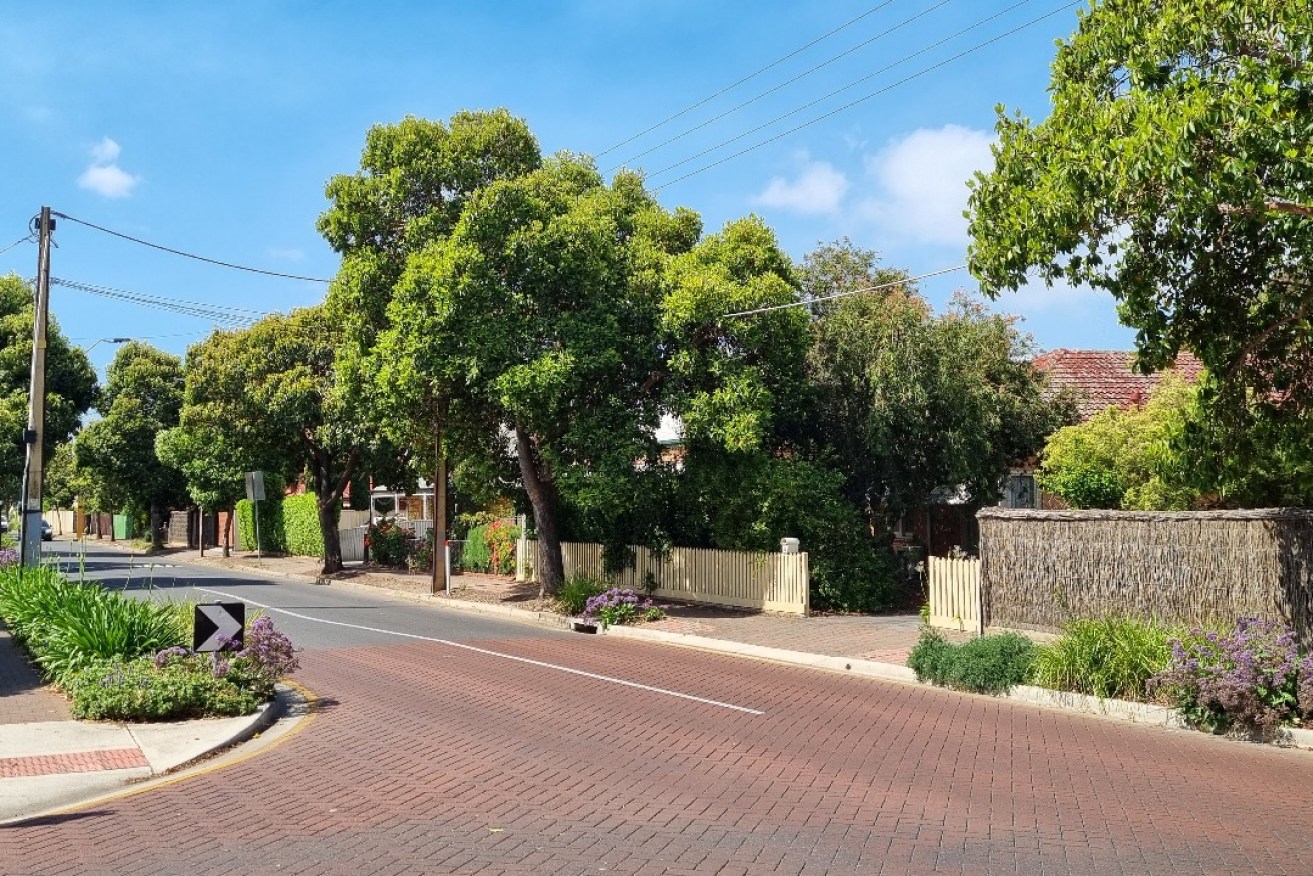Seeds of change for housing development
The state government’s Urban Greening Strategy has been released, outlining a plan to cool the city by strengthening legislation and encouraging housing developers to be greener, including increasing the tree canopy.


Trees lining a street in the City of Unley. The council area has struggled with dwindling tree canopy. Photo: Thomas Kelsall/InDaily
Launched by Green Adelaide, the Urban Greening Strategy is the first document of its kind in South Australia that outlines solutions to increase Adelaide’s climate resilience.
The report found this will be achieved by strengthening tree protection legislation, reviewing the state’s green cover targets and supporting developers to make greener choices.
This follows data first reported by InDaily in April showing only 17 per cent of metropolitan Adelaide is covered in tree canopy.
This falls short of the widely accepted target for urban areas of 30 per cent tree canopy coverage.
Green Adelaide presiding member Chris Daniels told InDaily that moving forward to a greener, more liveable Adelaide requires a multi-pronged approach and the cooperation of multiple stakeholders, including state government, councils, residential and commercial developers, research bodies and community groups.
“It’s not about pointing a finger at anyone, it’s about understanding the complexities of our area and then what should we do with different locations to achieve the vision at the end,” he said.
“If we don’t start on the strategy right now, then we just miss opportunities. It gets too late, it gets too hot… and you don’t get people putting greenery front of mind.”
The solution to increasing tree canopy put forward in the strategy is a combined effort of protecting existing trees and planting new ones.
“The type of tree, its size, its relevance within a community setting, all of those things need to be incorporated in the legislation, and that’s a role for the state government,” Daniels said.
One of the biggest contributors to the lack of tree canopy is tree removal in residential areas, with 1,599,908 square metres of tree removal occurring between 2019 and 2022.
To tackle this, the strategy encourages new developments to include trees in innovative and cost-effective ways.
“We’re thinking about where’s the green first and then how do we build around it,” Daniels said.
“How do we build our commercial areas? How do we build our car parks? How do we do all of that?
“It’s just part of the way we should be thinking about development.”
The strategy suggests enhancing the Planning and Design Code and offering supporting tools to help developers go beyond the minimum requirements for greening.
Daniels said while different developers have different interests, Green Adelaide has seen an appetite to cooperate with greening guidelines when they’re clear.
Green Adelaide has a tree planting guide for developers, and Daniels said providing resources like this to the sector has “a very significant impact”.
“The other thing, of course, is that they’ve got to sell it to someone,” Daniels said.
“So you make sure that the community knows the value of trees and green spaces so that they’re looking for accommodation that provides that then you’ll find developers who do that.”
Housing on subdivided properties – known as infill housing – is one of the key challenges for urban greening because it creates impermeable surfaces through roof-to-roof connections which creates a ‘heat island’. It also limits available space for planting and can hinder stormwater management.

A before and after vision of how residential infill can be improved. This photo: Green Adelaide
The strategy is also focused on green equity, which would prioritise urban greening in areas with high urban heat and high socio-economic disadvantage.
Using trees to shade the western facade of a dwelling can drop total energy costs between 5 and 10 per cent. Studies conducted interstate also revealed boosts to property value, with Perth-based research showing a broad-leaved tree in front of a home can add more than $23,000.
In addition to housing, arterial roads and hard surfaces have been pointed out as key areas to improve greening.

Hard surfaces impact heat intensity, with hard asphalt surfaces reaching temperatures of more than 65°C when exposed to prolonged sunlight. Asphalt covered by shade can be about 30°C cooler. This photo: City of Burnside 2023
“We now know from so many communities around the world, what happens if you don’t have greenery in the cities, especially ones that are likely to have high heat,” Daniels said.
He said the work to achieve a greener city must be ongoing, which is why the strategy outlines the need for continued research in various areas, including solutions to improve biodiversity-sensitive and water-sensitive urban design.
Car parks were flagged as one area where water-sensitive urban design can be done to better manage stormwater, improve water quality and maximise tree growth.

Adelaide Oval’s Fig Plaza car park was given as an example in the strategy, where rain gardens were installed to collect stormwater to water garden beds, leading to tree growth over two years. This photo: Water Sensitive SA
“We know enough about what to do now in the short term, and we don’t know enough to know how to be completely prepared for the medium and long term,” he said.
“So we need to keep going, keep going, keep trying and accept that things change.”
The draft Urban Greening Strategy is now available for the public to read and give feedback via YourSay until June 28.
Climate, Environment and Water Minister Susan Close said the draft strategy plays an important part in making Adelaide “a cooler, greener and more livable city”.
“With the impacts of climate change expected to intensify over coming years, it is vital we take steps to cool our urban centres and provide habitat for birds and other animals,” she said.
“I’d encourage South Australians to have their say on this important piece of policy work so we get the best possible outcome.”
The state government aims to implement the strategy by the end of 2024.




